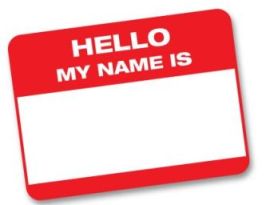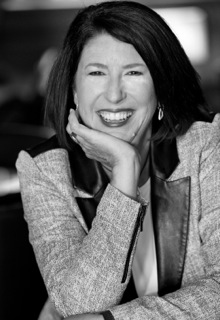I have to admit that I went into the conversation about storytelling wondering “what’s the story here?” How could something as old as storytelling be a hot new topic in marketing. Darren Marshall, CMO of Steinway & Sons, was kind enough to set me straight in preparation for our panel Storytelling and Branding: Does Story Trump Data (also featuring Aimee Munsell of IBM and Douwe Bergsma of Georgia Pacific) at The CMO Club Summit. I could add a more robust preamble but that would simply get in the way of the good stories that lie ahead.
 Drew: So Darren, our given our panel title, does story trump data?
Drew: So Darren, our given our panel title, does story trump data?
I think it’s the balance to be honest with you. I wish I had more data. I am glad I have a good story, but I’d love to have a little bit of both. But you know, with the lack of data, then story is where I am going.
Drew: Steinway has been around a long time. What story are you telling?
What’s interesting about Steinway is that it’s an old company that really has a pretty incredible story because you don’t think about how pianos are made, the artistic expression they bring, or the emotional connection that people have with them. And not only the beauty of what goes in, but the beauty that comes out, as well. And to realize that this level of craftsmanship happens in New York City to this day, much in the same way that it did a 100 or 150 years ago is pretty incredible, particularly in a world where disposability is the norm.
Drew: I have to say that the made in NYC part really struck home for me. Do you see storytelling as something different than you would have done as a marketer 10 years ago?
Not really, I don’t think. At the end of the day, I believe that stories are engaging. Bedtime stories are all about captivating someone’s imagination and taking them someplace else so that you can relax and calm yourself and go to sleep. That’s what any advertising or communication should be about. And whether it’s a presidential speech or whether it’s a story about a brand, there are groups of people who are buying the technical elements of products. But the real value of a brand is telling the story of that brand and where it’s come from and why it’s come from there and how it’s made and who made it. That’s the irrational piece where you can exchange value. When you think about antiques, it’s one thing to say this is an antique revolver, but to say that this was the revolver General Custer used during the Battle of Little Big Horn — that has a story that goes along with it and there’s huge value. Whether it’s true or not is a separate thing. But it takes you to that place that is new and different and imaginative.
Drew: Tell me about your target audience and how this impacts your story.
At the end of the day, we address a very small group of humanity, people who have the buying power to buy one of our instruments and who have the interest in our category. It really is a very thin group of people. So the level of engagement needs to be much deeper than broader. I need to be able to really help them understand what the brand stands for and why it’s three times more expensive than other alternatives that may look the same. The value of what we do is not necessarily seen to the naked eye. And we need to be able to tell the story of what it is, particularly for people who don’t know what Steinway does in quite the way that others do. So as an example, a concert pianist would know exactly what a Steinway does. But you or I look at the Steinway versus its next alternative and they look very similar. You’ve got to be able to bring that to life why it is different for mere mortals like you and I.
Drew: So how does the storytelling enter the picture given your target?
We’re going to be much more about depth than breadth. The media choices that we use are going to be much more focused. I spent, as you may know, a long time at The Coca-Cola Company. And if you’re buying a Coke and you’re making those sorts of decisions very, very frequently, then your level of engagement and your risk of purchase are very, very low. And you’re making those purchases very frequently and you can change your behavior quite quickly. But when you’re buying something else of great expense and lasting value, and you’re doing it once or twice in a lifetime, then there is a lot more research that is done. I’d like to say that it’s an impulse purchase and it is for some people — for a lot of people, but not for everyone.
Drew: I know that you’ve just started marketing again after a long hiatus. Have you looked at new kinds of metrics to get a more complete understanding of the impact of storytelling?
To be honest with you, ours is a very small company. It’s very entrepreneurial; it is not the world that I used to work in at Coke. There’s a lot more subjectivity. Although the process is very similar, in terms of just finding the North Star if you will or the story arc that is essential to your brand, and then bringing it to life across the various different touch points, we don’t have the resources to be able to measure the effectiveness of every message at every touch point. By the same token, it’s a much smaller organization, so we can quite easily determine whether the content is on brand or not.
Drew: So how do you decide whether to tell the story from the brand’s perspective or from that of the customer’s?
For any brand, there needs to be a framework that considers the true essence of that brand, its values, its benefits which I’d call a traditional packaged goods creative brief. It really gets to the essence of the brand, which we have done and as most other people have done as well.
And getting to that story comes not only from a couple of different vantage points, but then also gets to the different stakeholders as well. And each of those, if the brand is true to its set of values and it’s North Star, then that story will be similar but told from three different angles. So in our case, we talk about the craftsmanship of our product, the artistic expression that it empowers, and the beauty it adds to homes and lives.
We talk about those things and values from the artist’s perspective. Showing how that craftsmanship then leads to nuances not just in a physical product object, but in the music that then flows from that product, which is really the end benefit in another way.
We talk about the owner, those who may or may not be players, but those who appreciate what our brand stands for, and that same set of values, but seen from another set of eyes. And there are probably few other perspectives. But all of that content is what brought them to life. It’s the same story, but told through different lenses. It’s almost like the books of the Bible are the same story, but told from different apostles’ perspectives. And so it’s the same sort of idea.
Drew: Okay, I am a believer.

